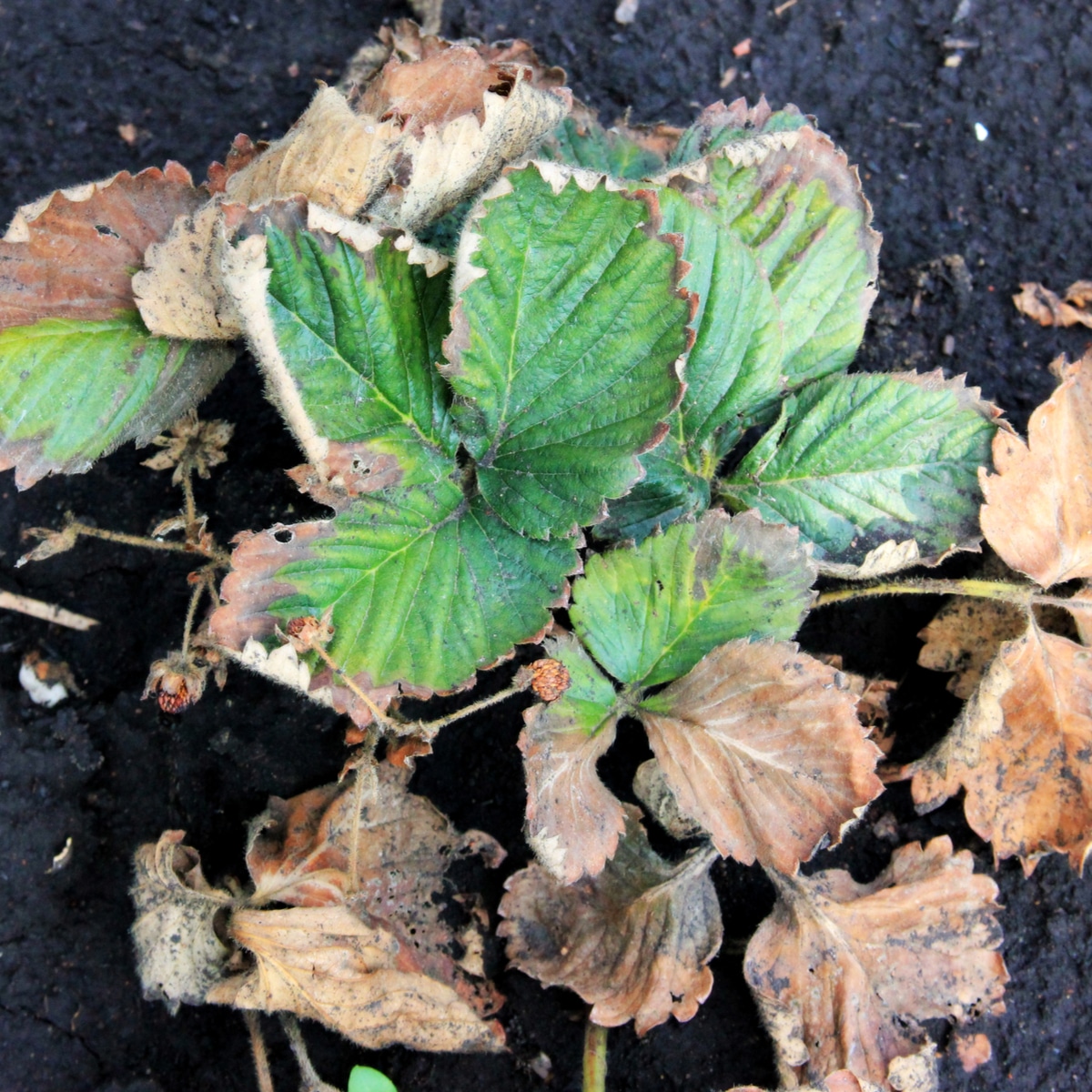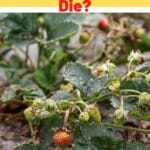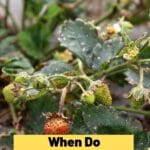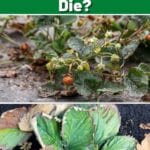Elenor asked:
When do strawberry plants die? My strawberry plants are doing badly. They used to flourish for the first 3 years, but now are thinning out and getting scraggly. It is mid-September, I read about renovation – to be done around June after harvest. Can these plants be dug up and dried out through the winter, and replanted in the spring? When I bought them they were just dried out looking bare clean roots. What should I do to keep them happy and healthy?

Answer to: When Do Strawberry Plants Die?
Elenor,
It sounds like your plants are either losing their vitality (happens between years 3 and 5, usually) or succumbing to some other problem (could be a pathogen or pest also). Unfortunately, however, you cannot dig them up and store them dry over winter. They will certainly die. Although they looked dry when they arrived, they were shipped moist. And, the instructions that usually accompany the bare-root plants indicate that rapid planting is critical. While it is usually best to store them in the ground, if you need to dig them up, you can learn here about Storing Bare-Root Strawberry Plants.

However, if your plants are more than three years old, it would be best to re-plant your bed completely with new and vigorous plants. You asked me when do strawberry plants die, but it might be better to answer a similar question: when do strawberry plants get old enough to warrant replacement? Strawberry plants are living things. As such, their biological mechanisms wear out over time. No one has discovered a plant fountain of youth as of yet, either. So, when plants get old, you wouldn’t expect them to produce much fruit for you just like you aren’t going to expect your grandmother to announce to the world that she is expecting twins. While this isn’t a hard and fast rule, any strawberry plant that is 5 years old or older isn’t going to give you strawberries (or many of them anyway). And, you can expect them to start the steep decline toward eventual death after year three. Some particularly hardy plants still do well in year 4, but those are usually the exception.
Therefore, regardless of the exact moment when the last biological function ceases in a strawberry plant and it officially dies, it is better to put poor elderly plants out of their misery. In fact, there is an entire system you can employ to keep your plants young and happy and producing strawberries for you virtually indefinitely. To learn more about it, go here: System for Transplanting Strawberries. And, good luck!
This is a question submitted to StrawberryPlants.org by a reader. See the Strawberry FAQ for more questions and answers.










Eva says
I bought my strawberry plant 3 months ago or so. I kept it in it’s pot and it grew really good,but since 3-4 weeks it looks dried out.The leaves are crispy,but it’s too hot on my balcony.I placed it inside the apartment,because it was too hot on the balcony as I said.It didn’t help.What should I do?
Mary Ward says
Once the leaves are crisped or burned, those leaves will not recover but if the plant is alive it should send up new stems and leaves.
Keep it watered (moist but not soggy) and see if you can find a place on your balcony that gets a break from the mid day sun.
Since it’s in a pot, it may need watering more than once a day, especially in high heat.
vikas says
Mr. strawberry I am a professional farmer from India,i am growing strawberries for quite some times want to know can we store plants by dividing them after taking the fruit and then replanting them directly for fruiting in next season .
1. Is it viable ?
2.Will it effect the yield ?
3.If it is viable at what temperature should these be stored ?
seeking for your kind guidance on the subject, please.
Campfire_Dog says
I have been growing and replacing my strawberry plants for years. However I have now developed spider mites on my plants and a cluster of them look terrible. They have produced very well this year but a second crop is coming on now. Some are ripening berries and others are in the flower stage. Do I have to give up this crop to fight these bugs or is there a successful end to them while still enjoying the fruit.
Mr. Strawberry says
Campfire_Dog,
I’d recommend a liberal application of diatomaceous earth to the affected plants and areas. You can safely consume strawberries after washing them if you use only diatomaceous earth. If that isn’t sufficient, you can use the more powerful conventional pesticides, but I’d recommend not consuming the fruit after using those until next season. Good luck!
Diane Ward says
My Strawberry plants are in their second year. I had many great berries. I planted June and ever bearing varieties. They are pretty much done producing but they look terrible. The leaves are rusty in color. Some wild clover is growing in between the plants. They are planted close together but produced very well in May and first week of June. Is there something I need to do so I don’t lose them or is this normal? I ordered 8 plants from a company that sold organic plants. I used a compost supplied by a farmer who does not use chemicals and raises organic beef, sheep, etc.
Please let me know what I may need to do. I don’t want to loose them.
Mr. Strawberry says
Diane Ward,
You likely need to thin them out. When strawberries are planted close together, it inhibits air circulation and can create an environment where either the leaves/vegetation succumbs to fungal infection or each plant can’t absorb enough nutrients/water from the roots due to competition with other plants’ root systems. If you aren’t comfortable doing that, I’d recommend calling your local agricultural extension agent and having him look at your issue personally. He’ll then be able to recommend exactly what to do, more than likely, after seeing the situation. Good luck!